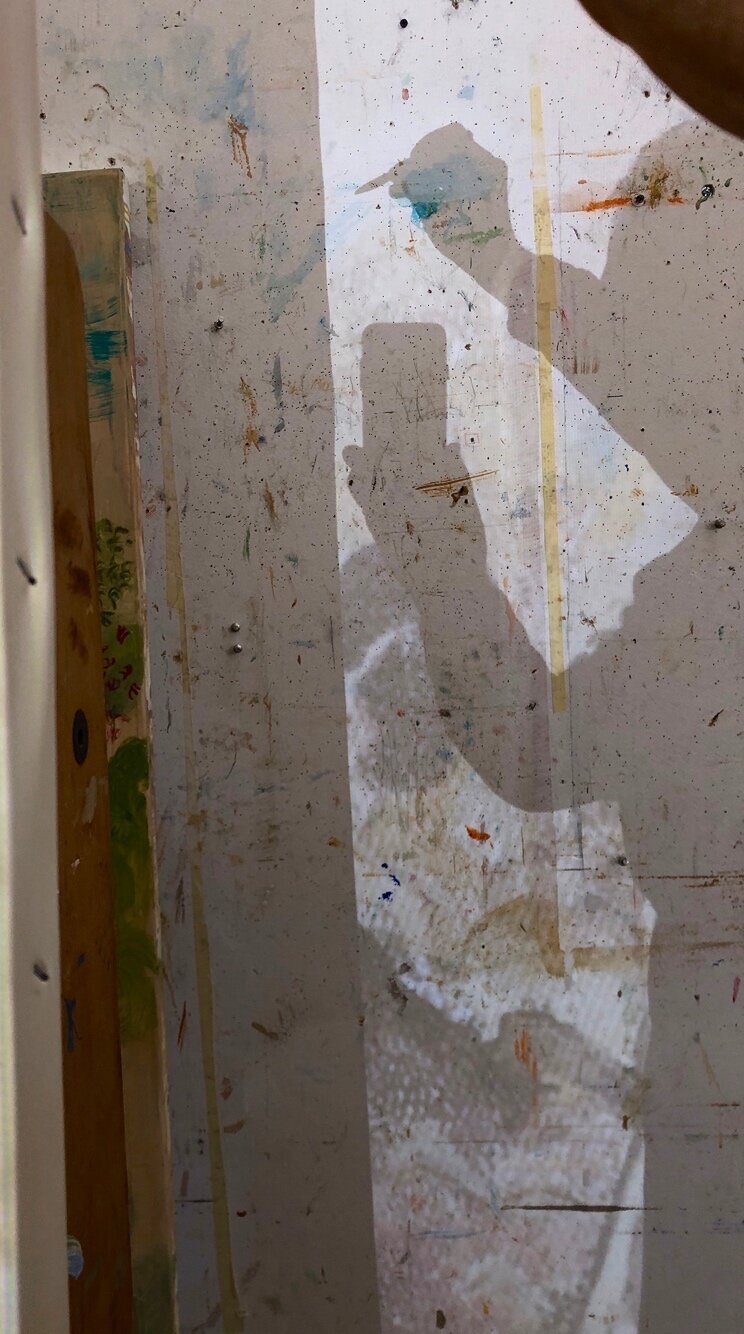4:13 PM: brian, at carbondale arts, sent me 12 questions as part of a project he’s working on publishing online called know your artist, know your art. it’s admirable. i answered 5 this morning, and will answer more when i have time. here’s what i wrote:
Why do you make the art that you make?
i love beauty in all it’s forms. the art i make now, today, is part of an ongoing process over many decades. it’s in my blood; in my bones. painting is my language, and, to continue the metaphor, i delight in discovering new words and phrases and ways of putting them together every day.
What inspires your work the most?
great art of the past and present, things that i find a visual turn-on, one of which, recently, has been a local creek and, most recently, feedback from people who look at my paintings and “get it.” from my use of space, to my colors, to the way i handle paint, whether it be watercolor, oil, gouache or egg tempera. i’m always looking at the work of the great painters who are my role models. And, in the case of matisse, reading what they wrote about their process; looking at his drawings; noticing how his work evolved over time.
When you’re creating new work, what is your general process?
process is the key word here. i believe making art is an ongoing process. there is no end point. that said, if i’m painting in oil, sometimes, like a few days ago, i find a stretched, fine, double primed portrait linen canvas of the many in my studio. i make a preliminary drawing or sketch, using very thin, diluted grey/tan oil colors, referring to photos i shot recently at the creek. then i might use a large flat brush to apply broad areas of a color that turns me on in that moment which, a few days ago happened to be brilliant yellow pale, made by williamsburg, a paint company based in brooklyn, where i was born. then, i find a shape: a lichen-covered rock or a branch and, with paint that is slightly thicker, i begin to define that rock or branch, painting over the yellow i applied moments ago so that it picks up some of the siena i’m using to paint the branch. if the canvas is large, like the 26 x 78” one i’m currently using, i may lay it down flat on saw horses and paint. every 15-20 minutes, i’ll hang it on my studio wall and go back about 40 feet to see if what i just did works. and then i might take a break and do something totally different, like composing this document, or postng on my daily blog, https://www.philiptarlow.com/dailyblog and not look at the painting at all until, at some point, i cast a quick glance and see where i need to do more work; where a color i used doesn’t work or is too harsh, etc. i might turn the painting upside down to see what’s going on spatially and compositionally, always remembering that what’s most important are the marks; the space; the colors and the painterly qualities. My process is different depending on the day and the medium. watercolor is a whole different animal. whatever marks you make with your brush, that’s IT. no painting over it; no erasing it. either the strokes you made work, or they don’t & you toss it. and one more thing. i’m a weather nut. late summer thunderstorms excite me tremendously. so i take brief breaks to check my many weather sites, some of which show future radar, to see what we can expect over the next few hours. oh, and one more thing: my studio is 500 feet from our house, where mikela is working on our educational product, promoting experiential learning which will be introduced into schools here in our valley this fall. we find that when one of us makes a breakthrough, so does the other. so we call each other & check in every few hours. she has an excellent eye, so if i need some feedback, she’ll walk over.
How has your work evolved in recent years?
it’s simpler. there’s more “empty” space. i’m constantly inventing what matisse calls signs. in other words, ways of indicating rock without describing it. abbreviations, you might say.
Describe your studio.
east wall of my studio with sound of a flute paintings
i’ve had many many studios in my life. this is the only one that was designed from scratch to be a studio. artists love north light because you don’t get direct sunlight. my studio has large, high north windows & two skylights, giving me near perfect lighting conditions. the building is about 54 x 22 ft. with very high vaulted ceilings and a loft area for storing paintings. (although, of course, there’s never enough storage space.) the floor is the original cement slab, which happily accepts drips of paint and incorporates them into it’s beautiful texture. i have a small kitchen with a fridge & stove, a bathroom and shower. i have a desk area with my iMac and printer. you could live here, but nobody has ever slept here. and i intend for it to stay that way. it’s a painting studio. as i said, i’ve had many studios. in athens, my studio overlooked the tower of the winds and the ancient roman market, of which i made many paintings. in nyc my studio overlooked central park. but this one, in crestone, colorado, overlooking the enormous san luis valley, is IT.


